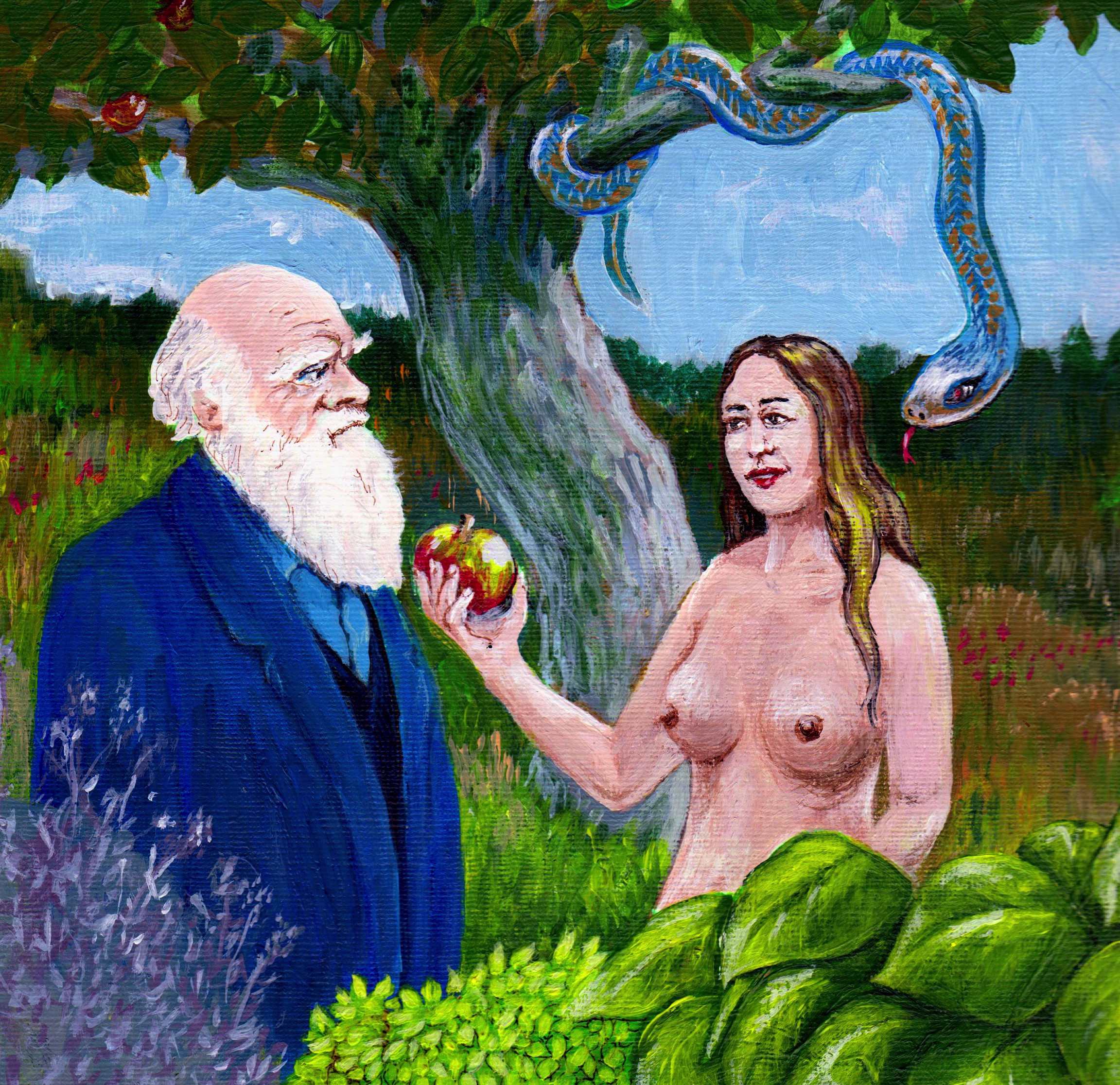| ©Mitchell Diamond 2017 | Home | Book ToC | Summary | Introduction |
Darwin's Apple: The Evolutionary Biology of Religion
Book Summary

Art by Stan Engel©
The phenomenon of human religion is both pervasive and mysterious. People have practiced religion for at least 50,000 years, far longer than agriculture and written language. Despite a few thousand years of philosophical and scientific investigation into the theories of religion, the origin and purpose of religion remains unexplained. Offered here is a novel theory that is based on empirical science and draws on evolutionary biology to account for religious behavior.
Here is the table of contents with a link to the first chapter.
Below is a summary to get a taste of the approach presented here.
The various theories explaining the evolutionary and biological origin of religion do not show comprehensively how religion is adaptive and increases individual fitness. The Split hypothesis proposes the co-evolution of religion and consciousness—that intrinsic religion is a compensating mechanism for higher-order consciousness. It unifies all ritual and religious behaviors under one umbrella and explains how all these behaviors are adaptive and increase evolutionary success. Empirical science is the basis for this inquiry.
Contemporary scientists such as Daniel Wegner, Antonio Damasio, V.S. Ramachandran, Joseph LeDoux, and John Bargh attest that consciousness, the rational mind, is not solely, or even mostly, the seat of volition as many believe. Humans remain tethered to their biological heritage, which behaviorally is the emotional system as Jaak Panksepp helps reinforce. Consciousness gives humans distinct advantages (culture), but there is no absolute truth accessible solely to consciousness. It has limited inherent intelligence. Consciousness also evolved to be far noisier and distracting than is useful and carries a distinct and significant downside. The limbic system’s reward and pleasure centers are the primary arbiters of behavior and serve homeostasis, the physiological activities that ensure survival and reproductive success. Cognitive biases are the unconscious drivers of “conscious” decision-making and, themselves, are derived from innate emotional predispositions and conditioning. Religion serves to rein in overbearing consciousness and promotes instinctual knowledge. Religion quiets consciousness to let emotions and homeostasis run the show, hence religion is adaptive.
All religious behaviors including music, art, dance, mythology, and prayer evolved to elicit emotions and suppress or quiet consciousness to various degrees. Contemporary brain and behavioral research show these ritual activities stimulate the brain’s reward systems, and people benefit from them. This would not have happened had they not been evolutionarily adaptive. These ritual behaviors are utilized by psychologists and psychotherapists to help people integrate emotions, which strongly supports their adaptive functions.
Read the introduction that lays out The Split hypothesis of religion in more detail.
| Home | Book ToC | Summary | Introduction |